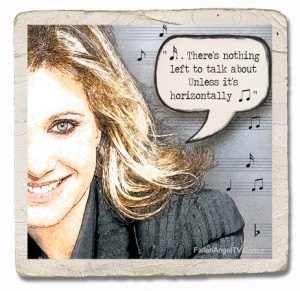(10/28/13) As the poet said, “Every generation blames the one before…” This might have been valid when Mike Rutherford penned that line for a tune in the late 80s, but we may actually be encountering an era where the upcoming generation should be sending out thank you baskets instead of seeking fault, especially when it comes to attitudes about sex and relationships.
The “Millenial Generation” is coming into an adulthood that was preceded by a lengthy period of civil and gender rights struggles–much of which resulted in significant shifts in social values that this new generation benefits from. Say what you want about how they appear on the surface, but according to data published by the Pew Research Center, it’s a generation that’s much more culturally diverse, more highly educated as compared to previous generations in the same age range and much more connected globally. As that translates to societal and sexual attitudes, they are the first generation to have a majority view that accepts working moms, same sex parenting and unmarried cohabitation as absolutely routine.
As with all things, there are pluses and minuses to how all of that might play out, of course, but there does seem to be room for optimism. As Baby Boomers are winding down and sucking Social Security dry while Generations X & Y are stumbling through middle age, Millenials–being the first fully digital bunch–are now slowly emerging as the social and economic drivers of the future. All of the major pieces to position themselves as one of the most significant generations in history are in place. The issue is: What will they do with all that’s be given to them?
While predicting the future is always a dicey enterprise (okay, we have the wrist-video-phones that were projected but whatever happened to the rocketpacks we were promised?), it’s pretty clear that regardless of what’s been lined up for them, Millenials fully intend to carve out paths based on their own rules–particularly when it comes to sexuality and relationships. We covered an example of this a few weeks back when we discussed the burgeoning “hook-up culture” but even that just barely nicks the surface. Case in point: The Pew study found that those in the Millenial generation are still generally focused on the institution of marriage, with over 70% saying they want to get married, but trending towards waiting significantly longer to do so than prior generations (comparing the age range of 18-29 with a married rate of 59% in 1960 to about 20% today). Ultimately–and without any attempt to stick a “good” or “bad” label on such things at this point–it’s often the domino effect that accompanies these kinds of shifts that contributes to unanticipated outcomes, so it will be tremendously important for sex educators and relationship coaches to keep up with–and fully understand–these “new rules” as they become more evident with this group.
Trying to get ahead of that curve may indeed be of some benefit, particularly since the resulting landscape is likely to be much different than what exists today, but falling behind–especially when this generation innately operates at digital speeds–could create an insurmountable gap. For those committed to sex-positive relationships and education, the time to be proactive is now. One thing seems pretty certain: This appears to be a growing case where just because something worked well in the past doesn’t equate to it working in the future.

